The following text is a slightly modified machine translation and may have some unnatural parts.
==Introduction==
A legend about Someba town, Masuda City and Tajikarao is left in "About Ishigami that can be distributed to Iwami" by Naotoshi Chiyonobu.
Tajikarao means a powerful man with strong hands.
==Synopsis==
In fact, it is correct to write Someba town, Masuda City as Somba. Because this land was initially rocky and they couldn't live even if they tried to live, so everyone was in trouble. So the villagers got together and consulted, and decided to rely on Tajikarao's help. The villagers gathered in one place and started excavation in prayer for Tajikarao. Then, the hard rock was easily pierced, and the work was unexpectedly made, and the villagers decided to live there with delight. And in order not to forget the gratitude of Tajikarao, the village was named Somba. In addition, Tajikarao was enshrined there and Iwakatsu Shrine was erected. The story that Somba became Someba before they knew it.
Tajikarao is a god that appears in Iwato mythology. Amaterasu hid in the heavenly Iwato (Rock door), but when she opened the Iwato slightly to see what was going on outside, Tajikarao took the hand of Amaterasu and pulled it out of the Iwato.
It is a story that the development of Someba was promoted thanks to Tajikarao, who has such a strong power.
==SomebaAmenoIwakatsu Shrine==

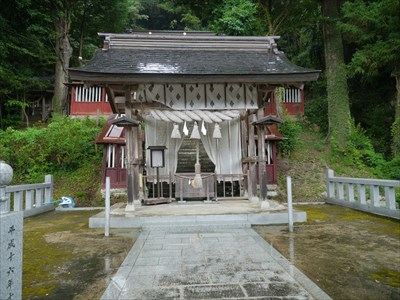
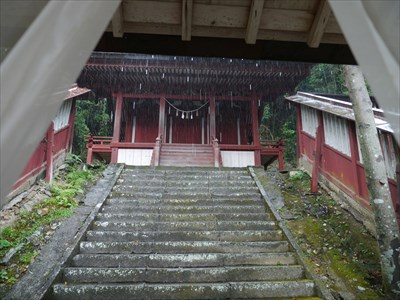
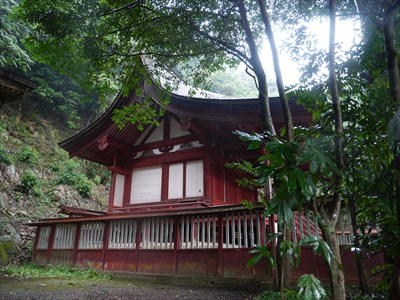
SomebaAmenoIwakastu shrine
SomebaAmenoIwakatsu Shrine is one of the Shikinai shrines enshrined in the Iwami region. The main deity is AmenoIwakatsu. It is said that Shotatsu-ji temple was attached and built as a Jingu-ji (Buddhist temple within a Shinto shrine).
According to Masuda City Magazine, the shrine was originally a Ishigami (stone god). There is a huge rock called Shimeiwa on the side of the shrine, and it is explained that this Shimeiwa was transformed into Shimiha and became Someha and Someba. Originally, it probably originated from nature worship for huge rocks.
Iwa means rock.
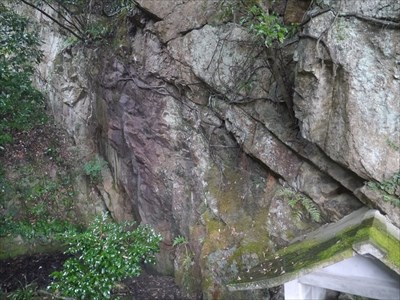
Shimeiwa Rock
Muneo Fujii, a national scholar who was active in the Meiji era, reads SomebaAmenoIwakatsu Shrine as Someba in "Consideration of location of Iwami country Shikinai Shrines" and says that it can also be read as Shiva. He also speculates that the deity would be AmenoIwatowake. Fujii considers the deity of the Omatsuri AmenoIwatohiko Shrine in Hamada City to be AmenoIwatowake and the same deity as Tajikarao. From this point, you can see the relationship between SomebaAmenoIwakatsu Shrine and Tajikarao. It is also said that Nukatabe clan lived in Someba in ancient times.
==Digression==
Masuda East High School is adjacent to the shrine. There is also a Kyouan Yonehara's (Maibara) panegyric monument in the precincts. He is a person who contributed to medical treatment by introducing vaccination in the western part of the Iwami region.

SomebaAmenoIwakastu shrine
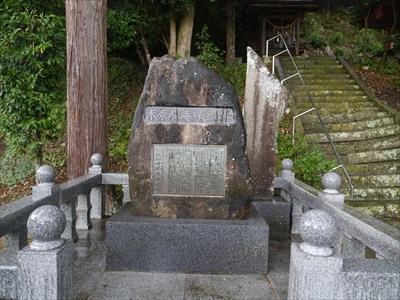
Kyouan Yonehara's (Maibara) panegyric monument in the precincts
There is a Kagura hall in the precincts, but since it is a large scale hall, I think it was originally a facility of Shotatsu-ji temple.
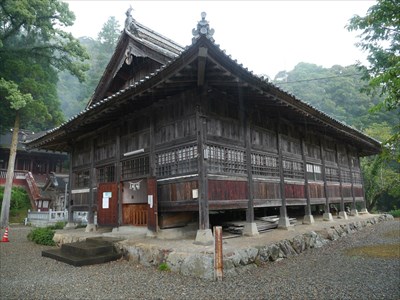
Kagura hall
==References==
- * 千代延尚壽「石見に頒布せる石神について」『島根評論』第4巻上 第6号[通巻第33号] (島根評論社, 1936, 2-13P)
- * 藤井宗雄「石見国式内神社在所考」『神祇全書 第5輯』(思文閣, 1971)pp.339-356
- * 『式内社調査報告 第二十一巻 山陰道4』(式内社研究会/編, 皇学館大学出版部, 1983)pp.910-913
- * 『益田市誌 上巻』(益田市誌編纂委員会/編, 1975)pp.335-336